The Huawei P8 Review
by Andrei Frumusanu on June 4, 2015 8:00 AM EST- Posted in
- Smartphones
- Huawei
- Mobile
- P8
- Kirin 930
CPU & System Performance
As mentioned in the introduction of the P8, the new Kirin 930 SoC is an octa-core A53 with one low-power quad-core cluster with a frequency range going from 403MHz up to 1516MHz, and another high-powered cluster going from 1017MHz up to 2016MHz. I was able to determine that the L2 cache size of the high-performance cluster comes in at 512KB, but due to no available rooting mechanisms for the device I couldn't manipulate the device to lock our benchmark tool onto the small cores to determine their exact configuration.
Generally, due to this being an A53 device, we shouldn't be expecting any stellar performance as ARM's little core is about 2-2.5 times slower as an equivalently clocked larger architecture such as an A15 or A57 CPU. So while Huawei ramps up the clocks quite high at 2GHz, it's still very much more of a mid-range performer.
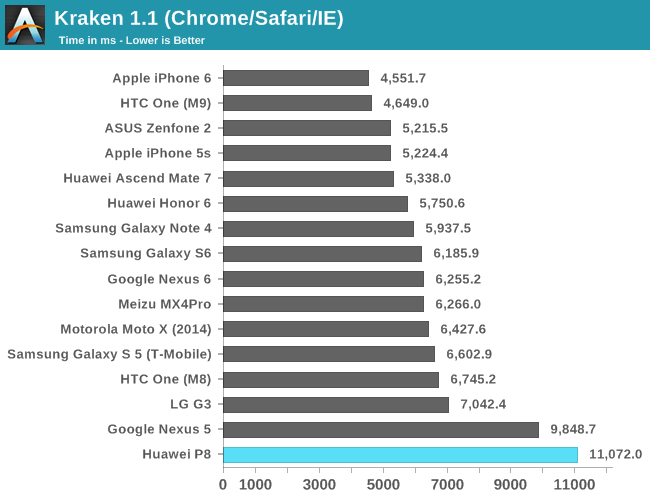
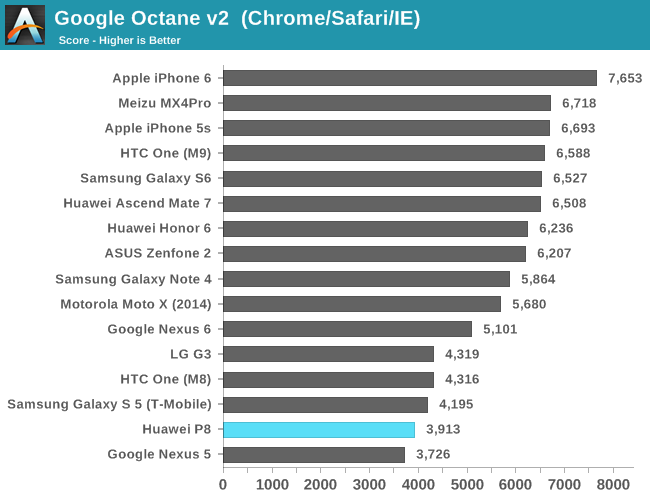
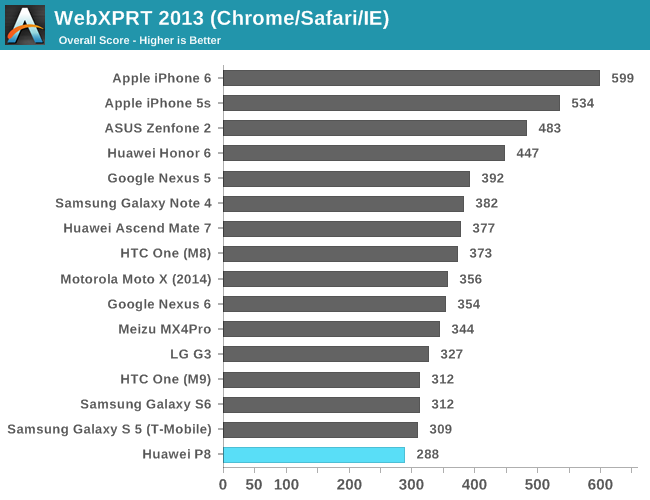
As expected, our in-browser benchmarks put the P8 at the lower-end of the performance spectrum as it simply doesn't have enough processing power to keep up with the competition. I also tested out to see if the stock browser would have any optimizations, but it performed more or less the same as Chrome. This makes sense as compiler targets shouldn't affect an in-order architecture such as the A53 as much as larger and more complex cores as ARM's big lineup of CPUs.
While the Javascript benchmarks represent a good insight in performance when browsing websites in a browser, it's far more common for users to experience web content via third-party applications which make use of a built-in WebView frame, in which case the OS's WebKit engine is used.
PCMark is such a test, where we can analyse performance numbers more representative of daily use-cases.
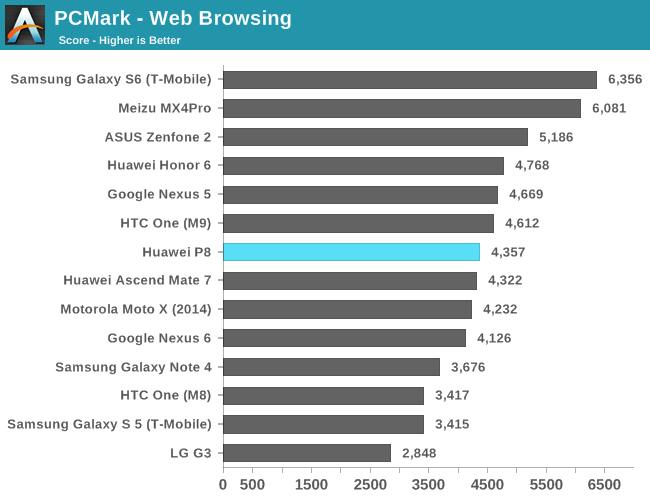
In the Web Browsing test, the P8 manages to land in the middle of the crowd. We saw large performance improvements coming from the Android 5.0 Lolipop update on several of our devices, and we're still in the process of updating all devices to the latest firmware to be able to re-test them.


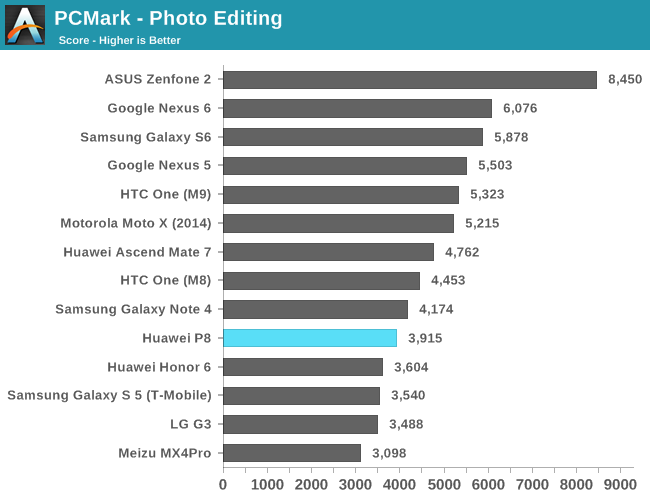
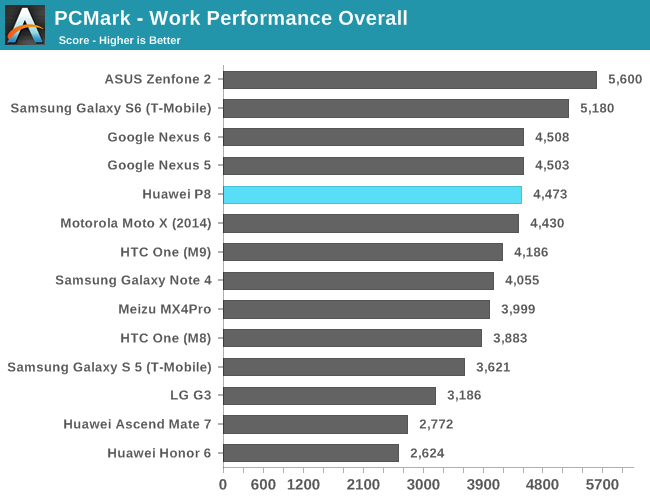
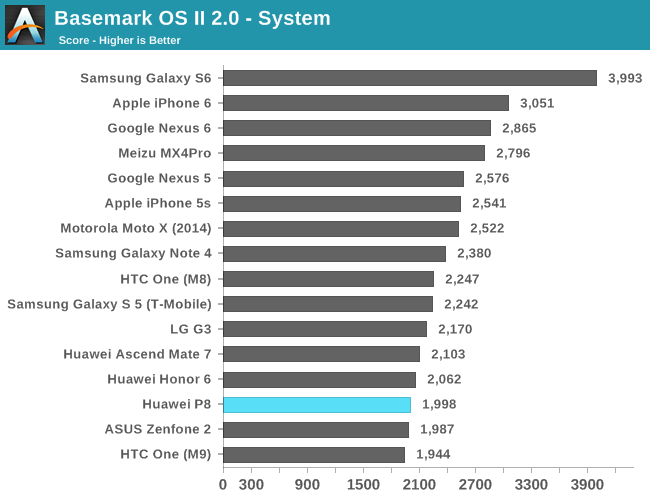
The system benchmark of BaseMark OS is more processing power oriented, as as such, the A53 cores don't perform as well in this test.
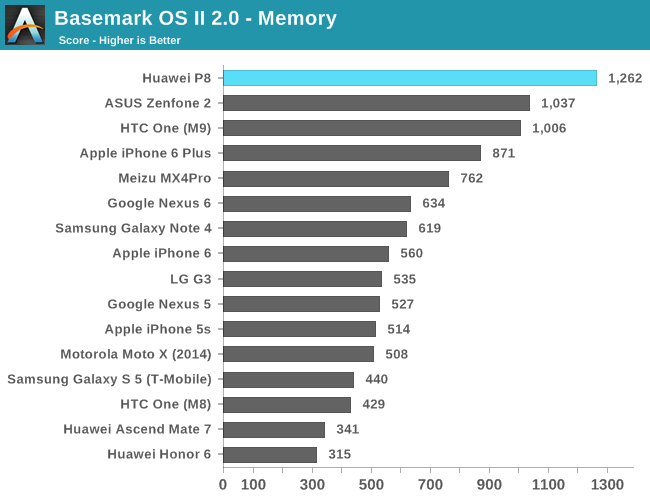
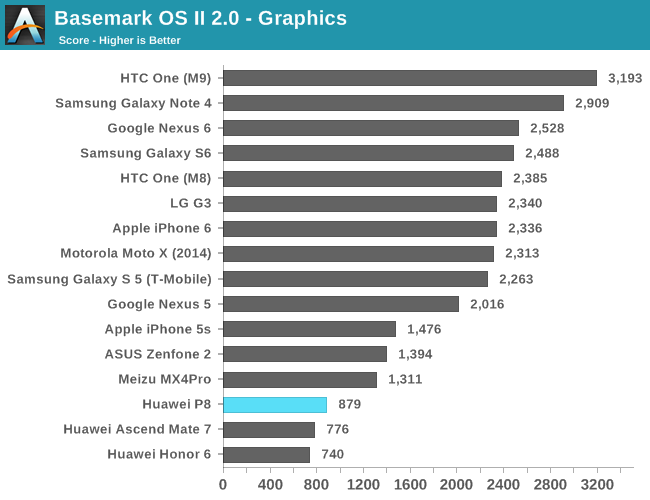
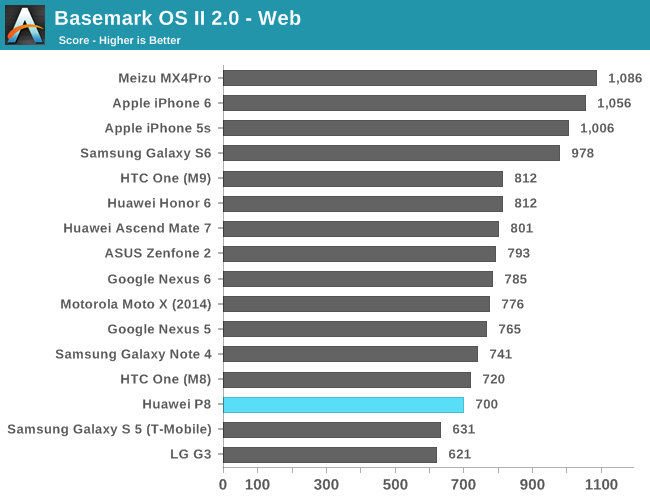

Again, the overall score ends up average for the P8. In every-day usage the device still manages to be quite fast even though it can't be compared to other flagship devices with stronger SoCs. HiSilicon especially seems to have some issues with fluid performance when CPU demand spikes very strongly, as one will notice small stutters throughout some apps when more heavy processing is being performed, something I often reproduce on other big.LITTLE SoCs when I disable aggressive scheduler migrations.










104 Comments
View All Comments
lilmoe - Thursday, June 4, 2015 - link
You guys have probably covered this, but why is UFS on your charts not showing the speed bumps it's showing in benchmarks on other sites? Is it a benchmark software issue, or is that the actual speed you're achieving?tipoo - Thursday, June 4, 2015 - link
One of their previous reviews said they were using an older test that only used a single thread to address IO, which gimped the UFS in the Galaxy S6. I'm not sure if they're still doing that.I don't think they should though - they said it was because the iPhones test was single threaded, but that's not the tests problem, HFS+ only allows one IO thread to access the file system at a time. Dumb for a file system in 2015, but there it is.
JoshHo - Thursday, June 4, 2015 - link
In the time since the Galaxy S6 review we've discussed the effects of multithreaded IO and it has become apparent that this ends up impacting normal eMMC results in an unrealistic manner due to controller overhead as IO in real world applications is treated as a critical section. Combined with the need to maintain comparable tests across Android and iOS, we've decided to continue focusing on single threaded IO performance for internal storage testing.Brakken - Friday, June 5, 2015 - link
I don't understand what you wrote except that the GS6 multithreading is a dog's breakfast. Is this correct?tipoo - Wednesday, June 10, 2015 - link
That's not what he was getting at. Just that multithreaded I/O requests benefit the GS6 UFS flash system while hurting the performance of every other phone, so they decided to stay with the older single threaded test.der - Thursday, June 4, 2015 - link
YESSSSSSSSSSSSSSSSSSSSSSSSLONG AWAITED REVIEW!
tipoo - Thursday, June 4, 2015 - link
Looks like another disappointment from them. Shame, it's gorgeous on the outside, but I wish they'd just go with another SoC maker until they can produce something decent. Heck, go with Intel, the Z3560 in the Zenfone 2 both stomps this and comes practically free.daar - Thursday, June 4, 2015 - link
Why no comparison with the iPhone 6? Isn't it generally the reference phone for photos?That said I disagree with the P6 low light performance, the greater noise is more of a problem overall than the odd slight smudging in the S6. For example, in the picture with the streets and car, you can easily make out the license plates with the S6, on the P6 you can't.
Andrei Frumusanu - Thursday, June 4, 2015 - link
I currently don't have an iPhone 6 to use as a reference phone, so the S6 had to make due.Ethos Evoss - Friday, June 12, 2015 - link
so why u putting it in your weird graphs and charts ? all fake ! as I said !